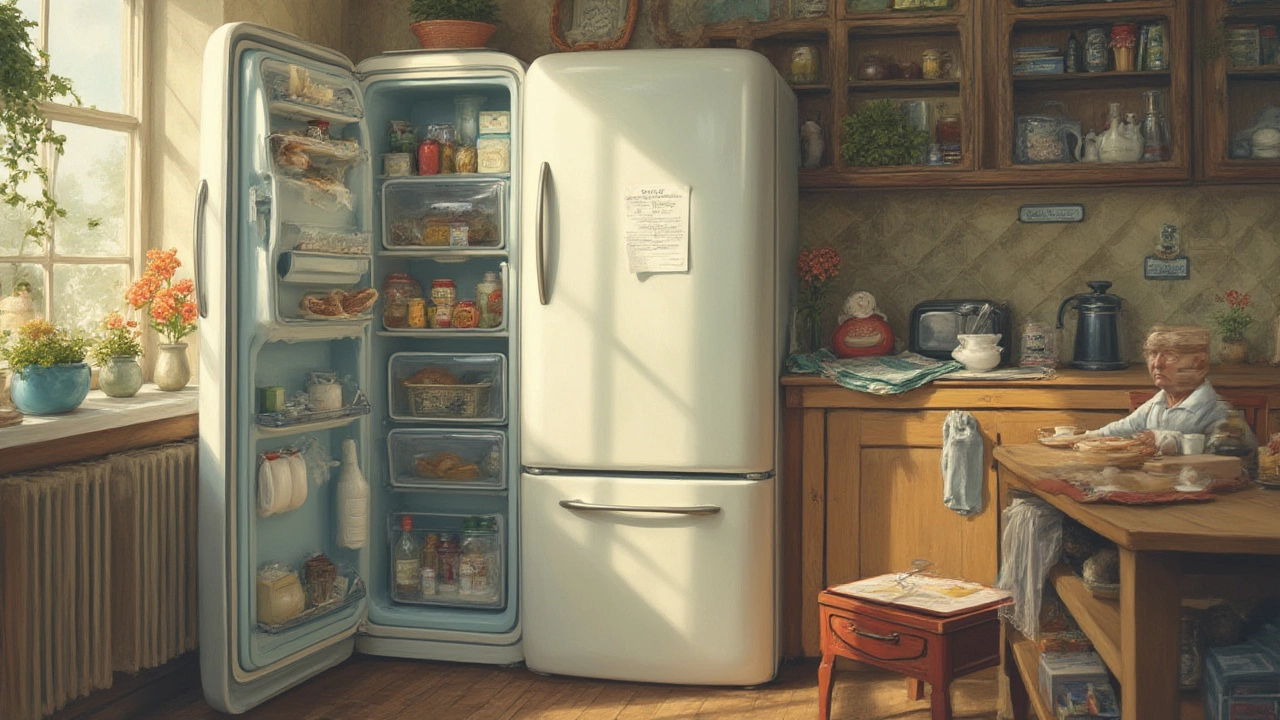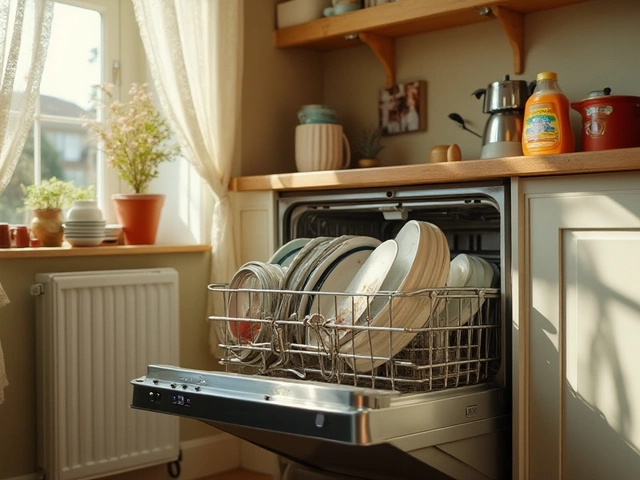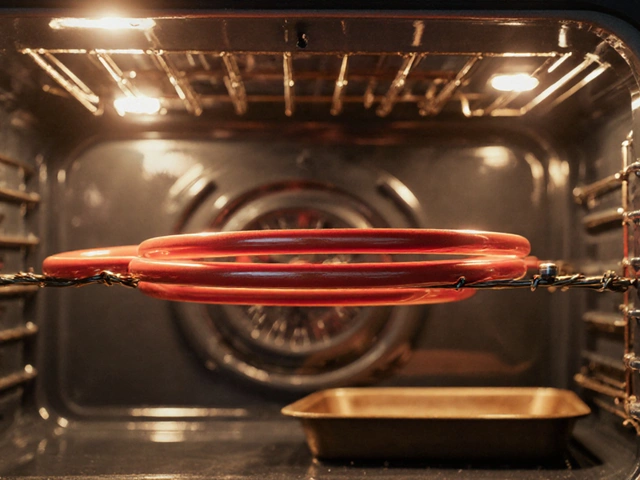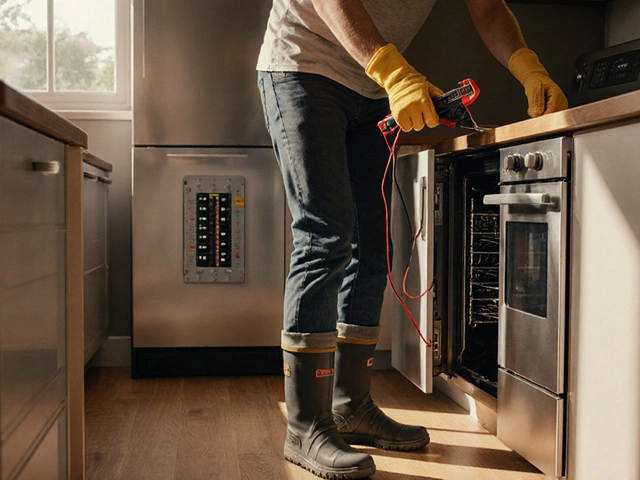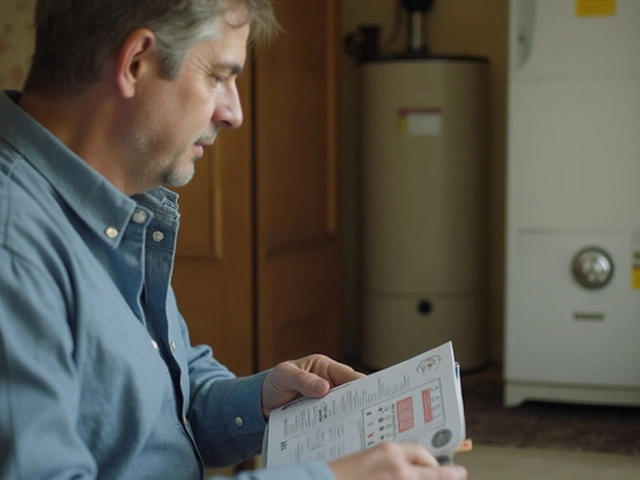Chilled drinks, crisp lettuce, and last night’s leftovers—none of it’s possible without a fridge that works. Yet, that box humming in the corner is way more complicated on the inside than you might think. It's not just a cold closet; it's a finely tuned machine. Like anything else you use daily, fridges can throw a fit, sometimes at the worst possible moment. Ever woken up to a warm glass of milk or soggy veggies? When a fridge fails, it's usually not random. Certain parts give up more often than others, and some issues are way more common than you’d expect. That's what we’re digging into: WHY your fridge stops doing its one job, and what you can actually do about it (before you lose a grocery’s worth of food again).
The Main Culprits: Parts That Tend to Fail Most Often
Let’s talk about the usual troublemakers first. In most fridges, there are a few components that just can’t seem to catch a break. The biggest offenders? Compressors, evaporator fans, condenser coils, and thermostats. Think of the compressor as the fridge’s heart—it pumps refrigerant through the cooling system. When it dies, your fridge is basically a fancy cupboard. Compressors can wear out after years of hard work (most last 10–15 years), especially if the fridge is packed full for long periods so it’s always running.
Then there’s the evaporator fan. This little fan moves cold air from the freezer to the fridge. If you hear a strange whirring, a rattle, or your fridge section is warm while the freezer’s fine, this could be the issue. Fans get frozen up or clogged with dust — or they just burn out, especially if they’re making weird noises first. Don’t forget the condenser coils—they’re usually underneath or behind the fridge, drawing heat away. If these coils are coated in dust or pet hair (which happens all the time), they can’t do their job, making your compressor work too hard or overheat. Thermostats can be sneaky, too. A dead one can make your fridge stop cooling or run non-stop, neither of which is good for your groceries or your electricity bill.
Let’s sprinkle in a weird fact: According to a 2023 repair tech survey, nearly 60% of fridge breakdowns start with either the compressor or a dirty condenser coil. A little dusting every six months can extend your fridge’s lifespan by years. Seriously.
The Small Stuff That Causes Big Headaches
You’d think the big-ticket repairs would be the only thing that knocks your fridge out. Nope. Sometimes, it’s the little parts that trip you up. Door seals (gaskets) are a perfect example—they keep cold air in and warm air out. If the seal isn't tight (maybe it’s ripped, old, or just smeared with gunk), the fridge has to work way harder to keep things cold. That means higher energy bills and more wear and tear on your compressor. Run your hand around the door while it’s closed—feel a breeze? That’s money (and cold) swirling away. Replacement seals are cheap and honestly, not too tricky to swap out yourself.
Light bulbs and control panels also can be sneaky villains. If the fridge light doesn’t go off when the door is shut, it’ll heat the inside just enough, over time, to make a difference—and slowly warm your food. Modern fridges love their fancy electronic control boards, but these are notorious for going out, especially after a power surge. Some boards run everything from the temperature to the defrost cycle—when they fail, different symptoms pop up: won’t cool, freezer icing up, or random beeping and blinking.
Let’s not forget about water dispensers and ice makers. Ice dispenser jams and leaky water lines are more than an annoyance—they can cause hidden water damage behind your fridge. Many fridges today have a simple water filter (that most people forget to replace). If it gets blocked, pressure builds up, fittings can spring a leak, or the dispenser just stops. Pro tip: replace your fridge water filter twice a year, and check behind for leaks every now and then—even a tiny puddle means something’s happening behind the scenes.

Warning Signs Something’s About to Break
If you know what to look for, your fridge will almost always give you hints before quitting. Those subtle clues? Don’t ignore them. If you notice the motor sounds different or cycles longer than usual, listen up. A compressor starting to fail tends to make a clicking noise as it tries (and fails) to start. A constant hum or buzz might mean the condenser fan is dying. When the freezer is frosty but the rest is warm, you could have a failed defrost heater or bad thermostat. Little puddles under the fridge mean the drain tube is likely blocked, which is super common if you rarely clean the fridge floor.
Energy bill creeping up? If the only thing that changed in your home is the fridge running more often, check your coils and gaskets. That weird smell every time you open the door? Could be food—but also could be bacteria forming in standing water from a blocked drain. Water pooling inside, under drawers or shelves, usually means a blocked defrost drain. Look for water stains around the baseboard, too—water leaks sometimes hide in plain sight.
Modern fridges can show errors right on the digital panel. Those codes aren’t just for the repair guy; a quick search for your model and code can help you troubleshoot. Most common? Error codes for temperature sensors going bad, or issues with the ice maker. If you get a code but don’t see an obvious problem, try a simple reset (unplug for several minutes, then plug in again). If that doesn’t do it, then a part is probably shot. It never hurts to check the manual if you still have it buried somewhere in a drawer—or go online to the manufacturer’s support page.
DIY Fixes and When to Call the Experts
Not every fridge failure means you need a brand-new appliance or a hefty repair bill. Some fixes are straightforward if you’re a little handy and know what you’re looking for. Cleaning your condenser coils (a vacuum or coil brush does wonders) twice a year can prevent compressor burn-out—a top cause of fridge death. Replacing a door seal? Usually just a few screws or clips, and you can order custom-fit gaskets online for most brands. Swapping out a broken light bulb or water filter is easy if you check the model number first.
But there are times to step back. If you smell burning or see electrical sparks, unplug it and call a pro. Compressors and sealed systems hold refrigerant under high pressure—trying to replace or fix these yourself without the right tools is dangerous and, honestly, could make things worse or void your warranty. Same goes for replacing a main control board or fixing a sealed ice maker. Repair techs have specialized tools and the training to handle these safely.
If your fridge is less than five years old, repairs usually make sense. Most compressors and motors are covered by warranty for the first few years, so always check before paying out-of-pocket. If your fridge is older than a decade, and the compressor’s gone or parts are discontinued, replacement might be the better deal. Also, keep in mind energy efficiency—newer fridges use much less energy, and the lowered bills over several years can offset the cost.
Here’s a simple checklist for extending your fridge’s lifespan:
- Vacuum or brush coils every six months.
- Replace door seals if they’re torn, loose, or stiff.
- Set your fridge temperature between 3–5°C (37–41°F), freezer at -18°C (0°F).
- Don’t cram the fridge full—leave space for air to circulate.
- Change water filters every six months if you have a dispenser or ice maker.
Keeping up with these simple maintenance habits can save hundreds on repairs and electricity—and maybe even save your groceries from a surprise meltdown. Remember, if you see or hear something odd, don’t just ignore it. Most fridge problems start small—catching them early is the real secret to avoiding disaster. If you’re ever stuck, there are tons of online videos specific to your fridge make and model, and professional help is just a call away. Your fridge, and your budget, will thank you.R

